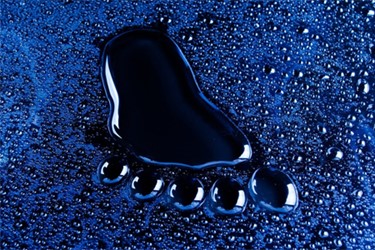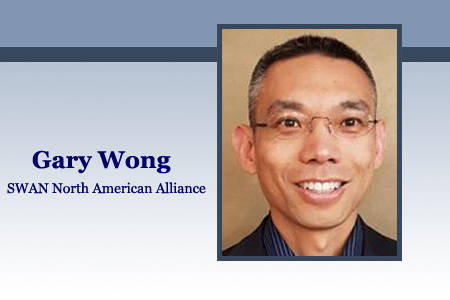Innovative, Collaborative, Inevitable: Furthering The Evolution Of Smart Water In North America

By Kevin Westerling,
@KevinOnWater

A Q&A with Gary Wong, chairman of the SWAN North American Alliance
It’s generally not smart to go it alone. Doing so is an act of hubris that ignores the wealth of knowledge, perspective, and experience that exists all around us. Being smart is being collaborative and learning from others. That’s a general axiom for life, perhaps, but it’s also true for smart water.
The Smart Water Networks Forum, or SWAN, is a UK-based organization founded on this principle. A collection of smart water experts, practitioners, and technology providers, SWAN seeks to advance the development and implementation of smart systems in the water/wastewater industry — with the broader goal of improving utility efficiency and enhancing water quality and security.
While adoption rates for smart water systems vary widely around the globe, Europe could be considered the current pace-setter. There are inherent advantages for European utilities over, say, their U.S. counterparts — namely, the less fragmented utility model — but North America has every reason and resource to be smart water torchbearers as well.
Leading this charge is the SWAN North American Alliance, which is chaired by Gary Wong, Principal of OSIsoft’s Global Water Industry. In the following Q&A, he provides an overview of SWAN initiatives while illuminating the smart water landscape and the path to future success — a path that will not, because it cannot, be walked alone.
Before there was a SWAN North American Alliance, there was SWAN — the Smart Water Networks Forum. What is the mission of each, and how do they correlate?
 The Smart Water Networks Forum is a leading global hub for the smart water industry, which includes wastewater. When we say water, we mean the full water lifecycle.
The Smart Water Networks Forum is a leading global hub for the smart water industry, which includes wastewater. When we say water, we mean the full water lifecycle.
It’s a not-for-profit organization that brings together key industry players — utilities, vendors, and academia — to help accelerate and create more awareness and adoption of data-driven solutions in water, worldwide.
The SWAN North American Alliance started in 2016 and really focuses its efforts on the North American water sector, drawing on SWAN’s collective, global industry expertise — the partners. We’ve got some great volunteers in the North American organization, and it’s growing very quickly.
In a short period of time, the Alliance has co-organized two smart water workshops — in San Diego and Chicago — and we’ve hosted four webinars on topics such as cybersecurity, smart wastewater systems, and smart water policy. We’re looking to grow it even further.
How would you classify the industry's rate of adoption for smart water technologies, and how does the Alliance help move that forward?
I think it’s the best time ever to be in water. The opportunities are vast, and North American water utilities are becoming much more aware of new technologies, sensors, and smart water networks. But I still say, overall, the speed of adoption can be much faster. There are still some barriers.
First, the cost of water for us here is quite low. It’s not fully costed out.
Also, the North American market is very fragmented. There is limited cooperation between the different stakeholders — technology providers, utilities, and investors — because of that fragmentation.
Municipal water sectors are also financially risk-adverse. They still look at low-cost bids, which may not always provide the utility with what they really need, especially if RFP [request for proposal] specs either aren’t written tightly or are open to wide interpretation.
Lastly, I would say culture is probably the biggest barrier, but I see us moving in the right direction. There are leaders who are passionate out there, [and] young professionals in the industry who have a different perspective on things. There’s huge potential, but collaboration is really important for these ideas and technologies to come together.
That’s what the Alliance is here to do — to help address and meet these challenges head-on, to increase the dialogue, and to offer webinars, workshops, case studies, and best practices to get people talking about it and understanding what their peers are doing.
What is the high-level, ultimate goal for smart water operations, and what components or capabilities does that entail?
If we were to have the ability to monitor and manage every drop of water from source to tap, back out to the environment after it gets consumed, and then treated again — in real time, with great efficiency — I think that would be truly smart.
Now, what does that include? How do we get there? It’s all about data. You need your sensors, instrumentation, automation, and communication systems to collect all that data, analyze it, and make sense of it to drive smarter, informed decisions that allow you to operate much more efficiently and reduce costs while maintaining quality and compliance.
What are the building blocks to becoming a smart water utility, and how can the Alliance help?
Each utility is different. It really depends on what the utility has in terms of pressures and constraints. In some instances water is becoming scarcer; or maybe there’s too much water and there’s flooding. Or maybe the water supply itself is becoming less predictable and costs are going up. There are also widespread aging infrastructure issues. Utilities will need technology to deal with these types of challenges, and the status quo just isn’t enough.
In general, water and wastewater plants have smart technologies already. They have controls and automation and they have SCADA [supervisory control and data acquisition]. This is just the next level to it. It extends beyond the plant, through distribution systems, collection systems, vendors, social media, and so forth.
It’s more of an evolution, and SWAN is here to help take utilities through the journey, by showing what others are doing and what has and hasn’t worked. We have research, tools and even a young professionals component. The water industry is collaborative. It’s typically a non-competitive market. We should take advantage of that.
Can you share a success story from the SWAN network for the financially risk-averse? Advanced metering infrastructure (AMI), in particular, has been a talking point for CAPEX vs. ROI.
When the data is utilized, AMI can provide tremendous return on investment. I’ll give an example…
The White House Utility District, which serves about 90,000 people with roughly 30,000 connections in Tennessee, had data-rich technologies — including control systems, geospatial systems, and 40 or so smart meters in their network — but the challenge they had was making sense of the data.
They put in some additional smart technology — real-time data management software [OSIsoft’s PI System] — and within three and a half days they found a $300,000 leak that they never knew about. In the last two years, they’ve saved over $900,000 [by] reducing leaks, and also $20 million in capital spend because they no longer have to expand their water treatment plant. Finding and repairing leaks is the best way to increase your system capacity for more water.
Are there any specific smart water technologies that you find exciting?
Related to metering, there’s a company called Olea Edge Analytics with bolt-on technology that converts a dumb analog meter into a smart digital meter. They’ve got the sensors on-board to detect leaks, flows, and pressures, and a communication modem built-in to send data back through a separate power source — even solar, with panels that can hook into the road. It’s disruptive in that the traditional upgrade method has been to rip out and replace the existing meters.
How do we foster the innovation and collaboration necessary to reach full “smart city” status?
Because there are many different levels of government and different parties involved, it’s not easy to do. But if we can get our own industry in order a bit better and be more of a singular voice, we can start moving toward the smart city ideal.
Let’s look within ourselves first — within the utility — and from there reach out to immediate and critical stakeholders. We want to make those smart, informed decisions to predict and prevent any upsets — whether it’s a sewer overflow or a flood that’s coming — and really, ultimately, reduce our costs, increase safety compliance, have a better quality of life, and have the resiliency that we need in the water industry.
That’s where the SWAN North American Alliance comes in, by helping guide utilities in terms of who’s been successful and how they’ve done it. We want to be that go-to resource for them, to help them through this journey.
